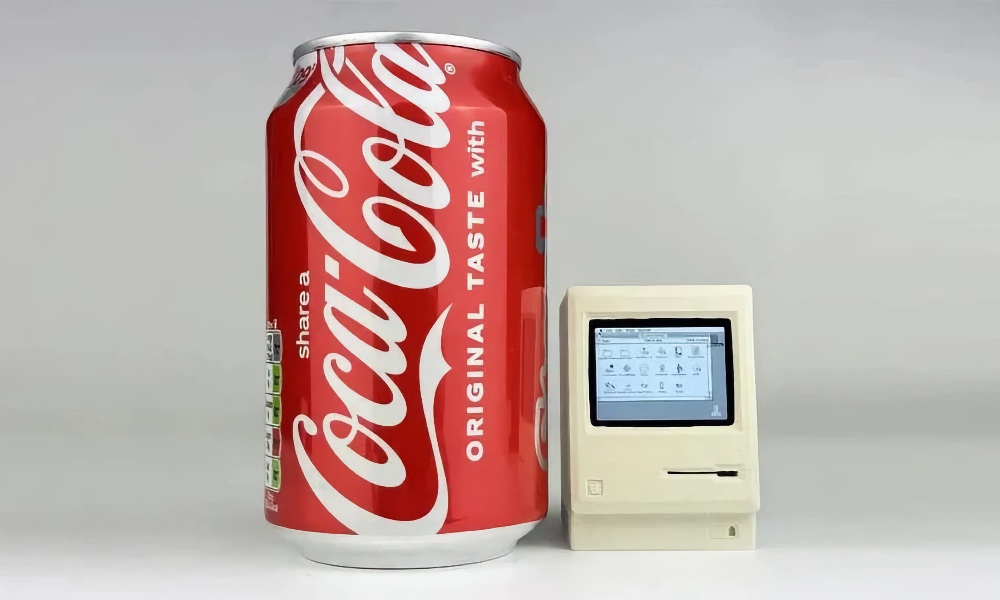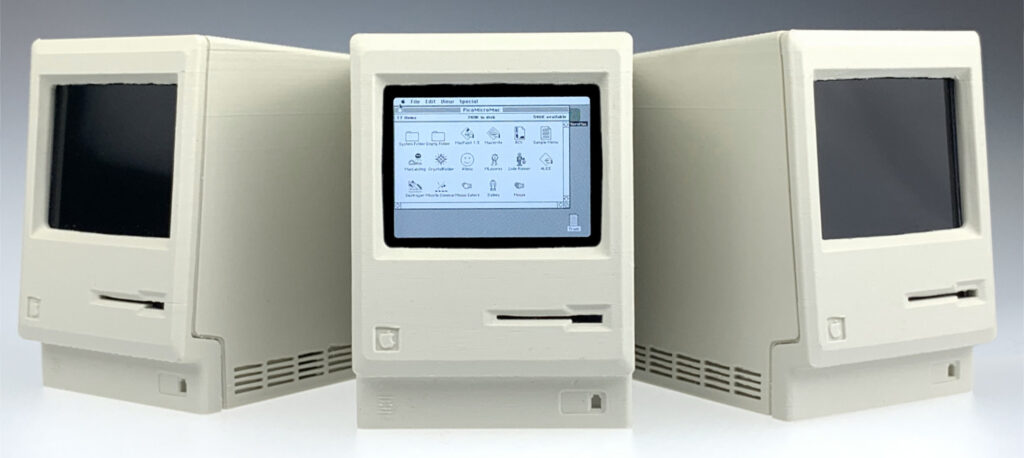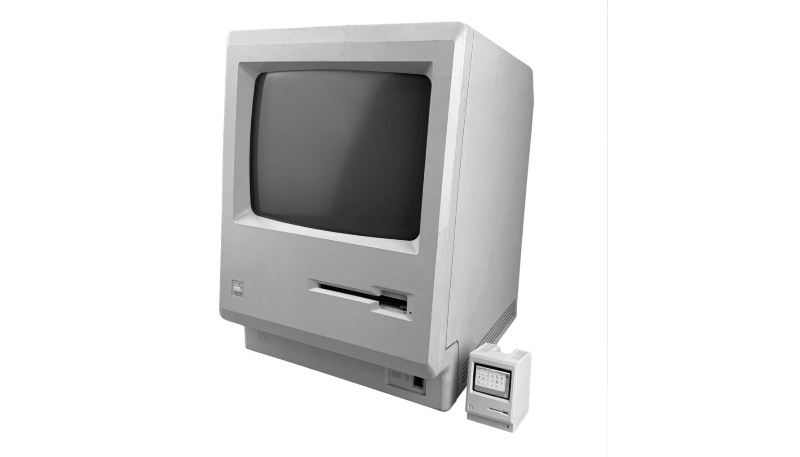Meet the Tiniest Working Macintosh Replica We’ve Ever Seen

Toggle Dark Mode
A website that sells parts for vintage Apple devices called 1-bit rainbow has unveiled what looks to be the tiniest functioning Macintosh replica ever. Meet the pico-mac-nano.
The pico-mac-nano is a functioning miniature-scale replica of the original 1984 Apple Macintosh. It’s a dizzying 62 mm high and can actually use a USB keyboard and mouse, thanks to the included USB splitter cable. The tiny Macintosh replica actually works, and it runs an emulated version of the classic Mac operating system.
Fully assembled, tested and working pico-mac-nano plus new USB splitter cable and hex key. This is the 1-bit rainbow implementation of the open source pico-mac project modified to run on a Pico Zero, and combined with a tiny 2″ LCD screen and a custom designed PCB in a detailed, miniature, 62mm high replica Macintosh 128k case.
1-bit rainbow’s Nick Gillard shared details about how he came up with the idea for the pico-mac-nano in a blog post:
It all started with me stumbling across the crazy cheap Raspberry Pi Pico and taking my first foray into micro-controllers. Searching for what others had done with the Pico led me to pico-mac; a project by fellow Brit and super-clever-fella, Matt Evans. In a nutshell he created a stripped back emulator for the original Macintosh running Macintosh System 3 on a Pico with USB keyboard and mouse support and VGA out. This was no mean feat and took a lot of ingenuity (its a great read) due to the limitations of the Pico such as only having 264k of RAM.
The pico-mac project inspired me. To me it echoed the early days of computers like the first Macintosh when pioneers achieved remarkable things within the technological limitations of the day. Needless to say I set about building a pico-mac and am not ashamed (slightly ashamed) to say I giggled like a little girl when that black & white, 512 x 342 pixel Macintosh desktop appeared on my VGA monitor and I launched Lode Runner.
While Gillard thought his creation was pretty cool as it sat, he began to think about how much cooler it would be if the pico-mac could actually drive a small LCD panel in a miniature replica of a Macintosh case. Thus, he began a quest to add LCD panel support, just to see if he could make a working Macintosh using currently available, cheap components.

There was plenty of trial and error for the project on Gillard’s part, as he worked to fit everything in the 62mm case. That’s when he learned about designing a printed circuit board and having it manufactured. He 3D modeled and 3D printed a dummy of the PCB in a size and shape that would fit the case and allow all the connections. After working on the design, he was pleasantly surprised to discover the first prototypes worked!
While we don’t have the space here to lay out the entire development process, Gillard’s blog post is recommended and entertaining reading.

When the pico-mac-nano is available, 1-bit rainbow sells it for £56. Unfortunately, heavy demand has led to it currently being out of stock, thanks to all of the coverage it has received on tech blogs. The website only says that orders will resume “soon,” and interested parties can enter their email address to be notified when more become available.
If you don’t want to wait, you can create one yourself, thanks to the pico-mac code and 3D-printable case files that are freely available on GitHub.








